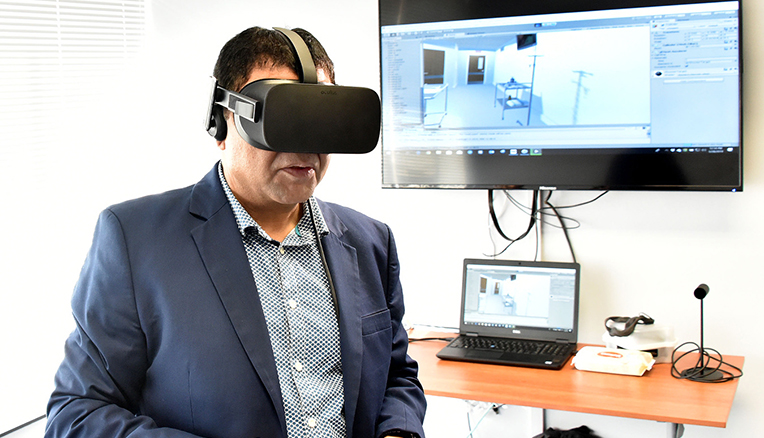These days we are surrounded by technology. Interactive whiteboards, 3-D printers, smartphones, laptops, e-books, and virtual reality (VR).
VR was previously associated with the gaming industry, but today it has many uses, including the healthcare industry and more specifically, the field of nursing.
A staff member in the
School of Nursing at the University of the Free State (UFS),
Bennie Botha, explains that he always had a fascination with VR. With VR being more affordable to the general user and with him working in the School of Nursing, he wanted to make a difference by providing a more financially sustainable way for students to integrate theory and practical work.
It was then that Botha, in collaboration with staff from the Department of Computer Science and Informatics and the School of Nursing, developed a virtual environment to train Nursing students as part of his master’s thesis. The title of his dissertation is: Measuring the usability and user experience of virtual reality as a teaching and learning method for nursing students. His supervisor,
Dr Lizette de Wet of the
Department of Computer Science and Informatics, said the cooperation between two disciplines is important. “This research can make a big contribution towards teaching and learning,” she said.
Adding to existing technology-rich environmentThis simulation in a computer-generated environment adds another element to teaching. Instead of only listening to a lecturer, students are immersed in a relevant teaching scenario and are able to interact within a 3D medical institution, treating and taking care of 3D patients.
The UFS School of Nursing has implemented this first for South Africa, using VR as an instrument to train nursing students. Currently, third-year students and postgraduate Paediatrics students are exposed to this way of training.
This new invention for the School of Nursing adds to the already existing technology-rich environment of the Clinical Simulation Unit within the school; a facility where healthcare students are exposed to training in a safe environment without harming the patient, using high-fidelity patient manikins.
Cost-effective simulation platformAccording to Botha, VR provides a cost-effective simulation platform that can be used to augment high-fidelity simulations. “It is also a low-cost alternative for institutions that do not have the capital to implement high-fidelity simulations. By implementing new innovative teaching methods, we aim to provide quality healthcare professionals who can showcase the educational excellence of the School of Nursing at the UFS,” says Botha.

Rector and Vice-Chancellor, Prof Francis Petersen, visited the School of Nursing and engaged in the simulator-based game.
(Photo: Supplied)
He explains the process: “Virtual reality provides students with an opportunity to learn by engaging in a simulator-based game. The virtual environment requires the students to perform a respiratory foreign-body object simulation scenario. Before each virtual simulation session, students are briefed and given the relevant outcomes of the scenario. Students also receive a quick tutorial on the use of the controllers and the head-mounted display.”
“Once a session is complete, a debriefing session is held where students can reflect on the outcome of the simulation. They can view a recording of their own actions for self-reflection afterwards.”
Botha believes the VR environment he created for Nursing students contributes to the Fourth Industrial Revolution, giving the UFS a competitive edge in new developments and the use of innovative teaching and learning technology.